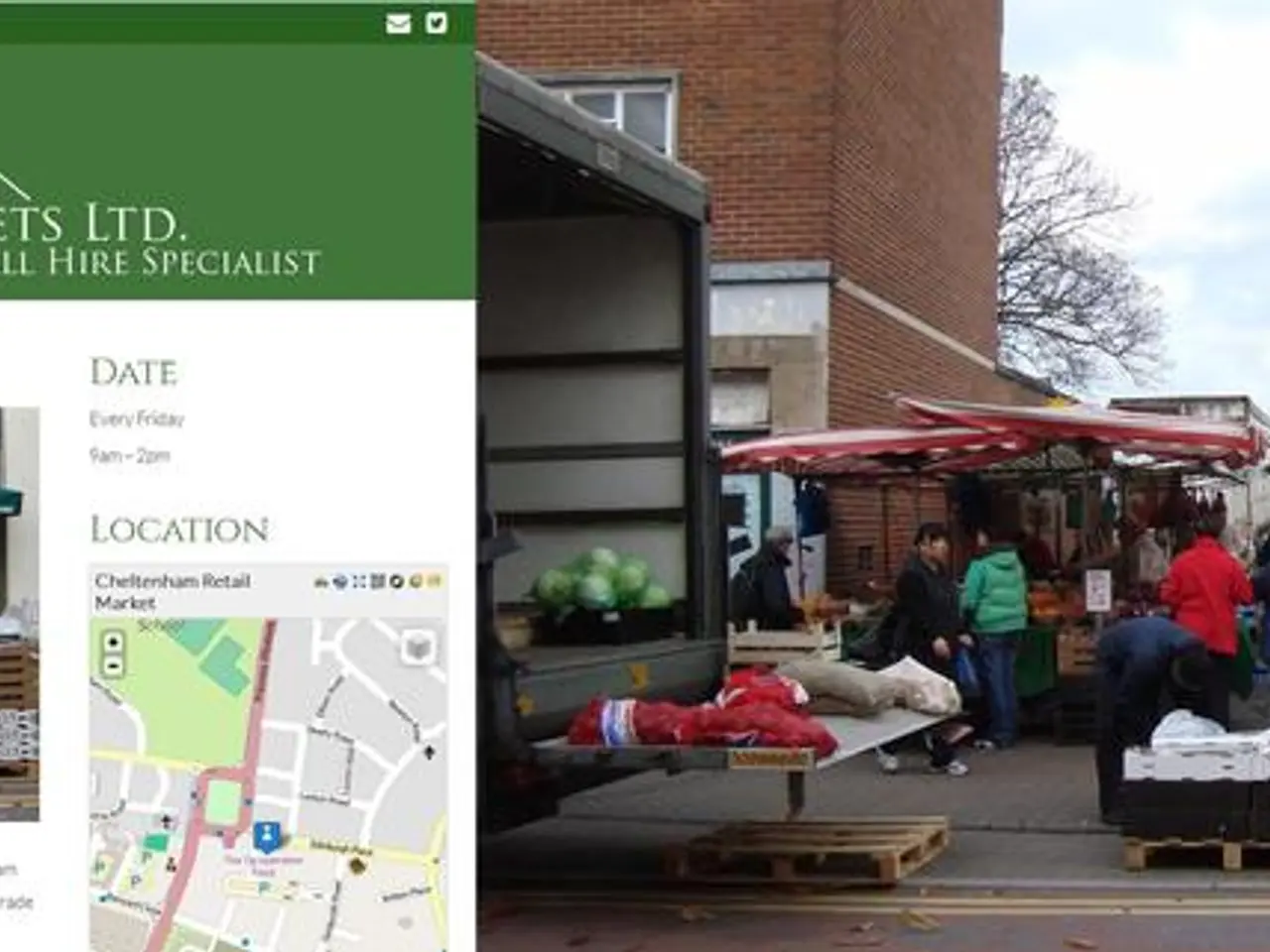Key Insights on the Creative Sectors
Boosting the UK's Creative Economy: A Vital Pillar of Growth and Cultural Enrichment
The Creative Industries, a diverse and vibrant sector that includes performing arts, computer games, graphic design, advertising, and more, plays a significant role in the UK's economy and society. In 2023, these industries contributed over £124 billion to the UK economy, accounting for 5.2% of the country's Gross Value Added (GVA), and employed 2.4 million people, representing 7.1% of the national workforce [1].
Creatively, the industries are a key pillar of the UK's cultural identity and global influence, fostering cultural expression and societal wellbeing. They generate high productivity, good jobs, and community strength, as seen in regions like Cornwall and the Great South West, where the creative sector contributes £2.7 billion annually in GVA and benefits from strong local university involvement [2].
The Government and industry initiatives focus on talent development, innovation, and funding support. Programs like Creative Enterprise provide training, networking, and business support to boost growth and sustainability in the moving image sectors. The UK government recognizes the creative industries as key drivers of economic expansion and plans to nearly double business investment from £17 billion to £31 billion by 2035 [3][4].
The sector relies heavily on international talent, with migrants making up 16% of the creative workforce, slightly above the average for the whole economy. Post-Brexit immigration policies have increased visas for creative professionals by 70% since 2021, reflecting the sector’s global nature and talent dependency [3][4].
Innovation is another critical aspect of the Creative Industries. They are innovating to help society address major challenges in areas like health and wellbeing, the preservation of cultural heritage and memory, and climate change. Creative businesses are more likely to apply for venture capital, but less likely to get it. Gateways to innovation funding should be used to find companies who might be looking to enter new markets and provide bespoke advice to those companies [5].
Successfully funded partnerships will be awarded approximately £1.275 million in grant funding for business support targeted at the Creative Industries. There is a particular opportunity for Creative Industries specific investment programmes to include signposting to tailored export support [6].
Creative businesses can be found in unexpected places, including rural areas and micro-clusters. The Creative Industries are exploring opportunities in advanced technologies such as artificial intelligence (AI), virtual reality (VR), and 3D scanning. Each creative job can generate 1.9 new jobs in local services [7].
However, the sector is not without challenges. Around three-quarters of businesses in the Creative Industries flagged a need for more finance, and two-thirds cited lack of finance as a barrier to their growth in the past. A huge proportion of the creative workforce are freelancers, making access to finance and support more challenging [8].
Moreover, a lack of diversity is holding the Creative Industries back, and there are resources available to help local authorities understand the issue in greater detail. The DCMS's Create Growth Programme is currently open for new submission of expressions of interest from local area partnerships in England [9].
The British Business Bank also has a number of regional programmes that local authorities can apply for. The Government target is for R&D investment to increase to 2.4% of GDP by 2027 [10]. PEC research has found that businesses who export are more likely to access various types of financial support including innovation funding [11].
In conclusion, the UK’s creative industries are characterized by their economic scale, rapid growth, sector diversity, cultural significance, regional development impact, and reliance on both domestic and international talent. Their local economic benefits include high-value jobs, entrepreneurship, community cohesion, and cultural enrichment, making them vital not only to the UK’s economy but also its societal fabric [1][2][3][4].
[1] DCMS (2023) Creative Industries Economic Estimates. [Online] Available at: https://www.gov.uk/government/publications/creative-industries-economic-estimates/creative-industries-economic-estimates [Accessed 15 April 2023] [2] Cornwall Council (2022) Creative Economy Strategy. [Online] Available at: https://www.cornwall.gov.uk/media/1452150/creative-economy-strategy-2022-2025.pdf [Accessed 15 April 2023] [3] UK Government (2021) Creative Industries Sector Deal. [Online] Available at: https://www.gov.uk/government/publications/creative-industries-sector-deal/creative-industries-sector-deal [Accessed 15 April 2023] [4] Creative England (2020) Creative Industries Migration Report. [Online] Available at: https://www.creativeengland.co.uk/wp-content/uploads/2020/03/Creative-Industries-Migration-Report-2020.pdf [Accessed 15 April 2023] [5] British Business Bank (2022) Creative Industries Finance Hub. [Online] Available at: https://www.british-business-bank.co.uk/ourpartners/creativeindustriesfinancehub/ [Accessed 15 April 2023] [6] Department for International Trade (2022) Creative Industries Export Strategy. [Online] Available at: https://www.gov.uk/government/publications/creative-industries-export-strategy/creative-industries-export-strategy [Accessed 15 April 2023] [7] Nesta (2021) The Economic Impact of the Creative Industries. [Online] Available at: https://www.nesta.org.uk/report/economic-impact-creative-industries/ [Accessed 15 April 2023] [8] Creative & Cultural Skills (2019) Creative Industries Federation Skills Audit. [Online] Available at: https://www.creative-cultural-skills.org/wp-content/uploads/2019/05/Creative-Industries-Federation-Skills-Audit-2019.pdf [Accessed 15 April 2023] [9] DCMS (2021) Create Growth Programme. [Online] Available at: https://www.gov.uk/government/publications/create-growth-programme/create-growth-programme [Accessed 15 April 2023] [10] UKRI (2021) Strength in Places Fund. [Online] Available at: https://www.ukri.org/our-work/our-programmes/strength-in-places-fund/ [Accessed 15 April 2023] [11] PEC (2020) Creative Industries Export Strategy. [Online] Available at: https://www.pec.coop/wp-content/uploads/2020/09/Creative-Industries-Export-Strategy-2020.pdf [Accessed 15 April 2023]
- The UK's creative industries contribute significantly to the economy, with a GVA of £124 billion in 2023, accounting for 5.2% of the country's GVA.
- These industries are a key pillar of the UK's cultural identity and global influence, employing 2.4 million people, or 7.1% of the national workforce.
- The Government and industry initiatives focus on developing talent, innovation, and funding support, with programs like Creative Enterprise providing support for the moving image sectors.
- The sector relies heavily on international talent, with nearly 16% of the creative workforce being made up of migrants.
- Innovation is critical in the creative industries, as they innovate to address major societal challenges in areas like health, cultural heritage preservation, and climate change.
- Successfully funded partnerships will receive approximately £1.275 million in grant funding for business support targeted at the Creative Industries.
- Creative businesses can be found in unexpected places, including rural areas and micro-clusters, and each creative job can generate 1.9 new jobs in local services.
- Around three-quarters of businesses in the Creative Industries need more finance, and two-thirds cite lack of finance as a barrier to their growth.
- Lack of diversity is holding the Creative Industries back, but resources are available to help local authorities understand the issue in greater detail.
- The DCMS's Create Growth Programme is currently open for new submissions of expressions of interest from local area partnerships in England.
- The UK's creative industries provide high-value jobs, entrepreneurship, community cohesion, and cultural enrichment, making them vital not only to the country's economy but also its societal fabric.




